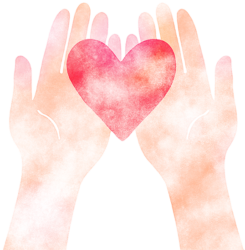Have you ever experienced a sudden rush of fear or discomfort that made you feel like you were losing control? You suddenly feel like the world was closing in on you. Your heart started racing, your palms got sweaty, and you felt like you couldn’t breathe? In that moment, you might have felt like you were having a heart attack or going crazy.
This experience can be incredibly scary and confusing, and it’s often hard to tell whether you’re having an anxiety attack or a panic attack. Both anxiety attacks and panic attacks can cause similar physical symptoms, such as racing heart, sweating, and shortness of breath. However, there are key differences between the two that can help you understand what you are experiencing and how to address it. Depending on whether it’s an anxiety or panic attack, you may need to use different coping techniques. So, important to distinguish between the two to better manage your symptoms.
Anxiety Attack and Its Symptoms
How to Distinguish Between Anxiety Attacks and Panic Attacks
How to Deal with an Anxiety Attack
Addressing the Problem in the Long Run
What Is an Anxiety Attack?
An anxiety attack is a sudden surge of overwhelming anxiety and fear that typically lasts for several minutes. It can be triggered by a specific situation or circumstance, such as a job interview or social event, or it can occur spontaneously.
The symptoms of an anxiety attack can vary from person to person, but typically include:
- Feeling worried or apprehensive; experiencing a sense of impending doom or danger
- Muscle tension
- Sweating, hot flashes, chills
- Trembling or shaking
- Rapid heartbeat or palpitations
- Shortness of breath or a feeling of suffocation
- Chest pain or discomfort
- Nausea or stomach upset
- Dizziness or lightheadedness
- Tingling or numbness in the hands or feet
What Is a Panic Attack and What Are Its Symptoms?
A panic attack is a sudden episode of intense fear and physical symptoms that can occur unexpectedly, often without an obvious trigger. Panic attacks can be terrifying and often feel like a heart attack or other medical emergency.
The symptoms of a panic attack can include:
- Sudden and intense fear or terror
- Rapid heartbeat or palpitations
- Sweating, trembling or shaking
- Shortness of breath or a feeling of suffocation
- Chest pain or discomfort
- Nausea or stomach discomfort
- Dizziness or lightheadedness
- Feeling disorientated
- Tingling or numbness in the hands or feet
- Fear of losing control or going crazy
- Fear of dying
It’s important to note that everyone’s experience with anxiety and panic attacks can vary, so not everyone will experience the exact same symptoms.
How to Distinguish Between Anxiety Attacks and Panic Attacks

While the symptoms of anxiety attacks and panic attacks may seem similar, there are a few key differences that can help distinguish between them. Here are some ways to tell them apart:
- Triggers: What Causes Anxiety and Panic Attacks?
Anxiety attacks are typically triggered by specific situations or circumstances that cause feelings of worry or fear, such as public speaking, a job interview, or health issues. Panic attacks, on the other hand, can occur unexpectedly, often without an obvious trigger, or they can be triggered by more unexpected events, such as a sudden loud noise or physical sensations like chest pain or feelings of being out of control.
- Build-up and Duration
Another difference between anxiety attacks and panic attacks is the build-up and duration of the symptoms. Anxiety attacks often have a slower and more gradual build-up and can last for a longer period of time – several hours or even days. Panic attacks, on the other hand, typically have a sudden onset and reach their peak within a few minutes before subsiding.
- Physical Symptoms: How Anxiety and Panic Attacks Affect Your Body
While both anxiety and panic attacks can cause physical symptoms such as sweating, shaking, dizziness, or rapid heartbeat, panic attacks are often more intense and can lead to feelings of tightness in the chest, difficulty breathing, and even a sense of impending doom or death. Panic attacks can be terrifying and often feel like a heart attack or other medical emergency. Anxiety attacks tend to have milder physical symptoms that may be less intense.
- Thinking: How Anxiety and Panic Attacks Affect Your Mind
Anxiety attacks may focus more on specific fears or worries, such as fear of flying, fear of spiders, fear of getting sick, or fear of social situations. During anxiety attacks, you may experience racing thoughts or a constant worry that is difficult to control.
Panic attacks, on the other hand, often include a fear of losing control or going crazy, panic causes a sense of disconnection from reality, making it difficult to focus or think clearly. During a panic attack, you may feel like you’re losing touch with reality or that you’re about to die.
- Behavior: How Anxiety and Panic Attacks Affect Your Actions
Anxiety attacks can lead to avoidance behavior or a tendency to withdraw from social situations or events. Panic attacks, on the other hand, may lead to more extreme behaviors such as running away or seeking immediate medical attention.
By understanding these differences between anxiety attacks and panic attacks, you can better identify and address your symptoms. If you’re unsure which type of attack you’re experiencing, don’t hesitate to reach out to a mental health professional for guidance and support.
Coping Strategies for Anxiety and Panic Attacks

When faced with a stressful situation, our bodies activate the fight-flight-freeze response. This response is a survival mechanism that helps us respond to potential threats. In the case of an anxiety or panic attack, this response can become overactive, and we can feel like we’re in danger even when there’s no real threat.
Dealing with anxiety and panic attacks can be challenging, but it’s important to know that both are treatable. The approaches for handling them, however, differ and must be tailored to the specific experience.
How to Deal with an Anxiety Attack
- Address the body stress response
To address an anxiety attack, we need to calm our bodies down and get them out of this hyper-alert state. You can use breathing, relaxation, or movement practices that activate the parasympathetic nervous system and help the body relax and counteract the fight-flight-freeze response that occurs during an anxiety attack. These practices may include deep breathing exercises, progressive muscle relaxation, yoga, or even simply going for a walk.
- Practice mindfulness
Bring focus to the present moment, notice and accept your uncomfortable sensations without judgment.
- Shift your perspective
When experiencing an anxiety attack, it’s also helpful to address your thoughts. Be mindful of your fearful thoughts and remind yourself that they may not necessarily represent reality. Try to challenge these negative thoughts and replace them with a more rational and helpful perspective.
Acknowledge that what you’re experiencing is a normal response to a stressful situation. Remember that the anxiety will eventually pass. Use positive self-talk to reassure yourself and help you stay calm. Remind yourself that you are safe and in control.
Adjusting your mindset can help you reduce anxiety and promote a sense of calm.
How to Stop a Panic Attack
When someone experiences a panic attack, their body can go into a state of hyperarousal similar to an anxiety attack, but the sensations can be much more intense and overwhelming. It’s important to recognize that panic attacks are often triggered by the fear of anxiety itself and trying to stop the panic can increase your anxiety about anxiety. So, do not try to stop a panic attack immediately!
Trying to change or control these sensations, such as trying to slow down breathing or heart rate, can actually intensify the panic attack and make it worse. That’s why it’s important to approach a panic attack differently than an anxiety attack. Instead of trying to “fix” the sensations, it’s crucial to allow them to be present and let them run their course.
In the moment of a panic attack, the best approach is often to simply “ride it out” and allow the sensations to pass. Remind yourself that these physical experiences are not dangerous or life-threatening, even though they may feel that way in the moment, and just let them be for now. This can be difficult to do, especially when the sensations are so intense, but it’s important to remember that panic attacks are temporary and will eventually pass.
During a panic attack, your body goes into an intense response to a danger. The physical sensations, such as rapid heartbeat, sweating, and shortness of breath, can be very intense and frightening. But they are all natural and, during a panic attack, there is no actual threat present.
It can be helpful to focus on the present moment or engage in sensory experiences, such as touching a textured object, as a way to distract from the overwhelming sensations. However, allow yourself to experience what you’re experiencing without trying to stop the panic. By accepting the panic attack and not trying to fight against it, you can often find relief and prevent the attack from escalating.
Moreover, this approach can help train your brain that the experience is not as dangerous as it feels, which can be helpful in the long run. The fear of these intense sensations can create a vicious cycle that perpetuates panic attacks. If someone experiences a panic attack, they may begin to fear having another one in the future. This fear can be so intense that it can actually bring on another panic attack, creating a cycle of panic attacks. However, if you’re able to roll with the panic attack and not fight against it, you may be able to break this cycle. This can train the brain to recognize that the sensations are not dangerous or life-threatening, which can reduce the frequency and intensity of panic attacks over time.
Anxiety and Panic Attacks: Addressing the Problem in the Long Run

While the strategies discussed earlier can help manage anxiety and panic attacks in the moment, it’s also important to take steps to address the root cause of these problems. By doing so, you can reduce the frequency and intensity of these attacks over time. Here are some long-term strategies that can be helpful:
- Identify Triggers
One of the first things you can do is to identify the triggers that set off your anxiety or panic attacks. This can involve taking note of specific situations, people, thoughts, sensations or events that tend to bring on your symptoms. Once you have a better understanding of your triggers, you can take steps to prepare for them in the future. By being prepared and having coping tools at the ready, you can help reduce the impact of your triggers on your anxiety and panic.
- Understand and Address the Root Causes
Managing anxiety and panic attacks in the long term involves identifying and addressing the underlying issues that cause them. It can be certain situations, overall stress in your life, past trauma, unresolved emotional issues, or other underlying conditions.
For example, let’s say you have a fear of public speaking that triggers anxiety attacks. In the moment, you can use the strategies discussed earlier to manage the attack. However, to address the root cause of the problem, you may need to work on your public speaking skills or address any underlying self-esteem issues that may be contributing to your fear. This could involve practicing public speaking in a safe environment, seeking feedback from others, or working with a therapist to address the problem.
Or, let’s say, you’ve experienced a traumatic event in the past and you have suppressed emotions related to that experience, leading to ongoing stress and anxiety that can cause ongoing stress and anxiety that can manifest in physical symptoms or trigger panic attacks. By recognizing and processing these emotions, you can lower the chances of experiencing future attacks.
- Reduce overall stress in your life
Take a step back and examine your lifestyle and environment to identify any sources of chronic stress. Try to identify situations or unresolved issues that contribute to your stress levels.
For example, if your job is a significant source of stress, you may need to explore ways to reduce that stress, such as talking to your boss about workload or work-life balance, or even considering a different career path.
Reducing the overall stress can be a difficult and ongoing process and may require making significant changes to your life. However, by taking these steps, you can help manage your anxiety and prevent anxiety and panic attacks from occurring.
- Learn to Process Your Emotions
Anxiety and panic attacks can often be linked to suppressed emotions, such as fear, anger, or sadness. It can be helpful to identify these emotions and find healthy ways to express and process them. This could include journaling, practicing mindfulness and meditation, or working with a therapist. You can also find helpful tools to better understand and process emotions through various mental health apps, such as Myselfland. It can offer tools to help you develop emotional awareness and coping skills.
- Incorporate Self-Care Practices
Incorporating self-care practices into your daily routine can also help reduce stress and prevent anxiety and panic attacks. This could include activities like regular exercise, learning and practicing mindfulness and grounding techniques, getting enough sleep, eating a balanced diet, and making time for hobbies and relaxation.
- Seek Help
Don’t hesitate to seek help if you need it. Anxiety and panic attacks can be overwhelming and challenging to manage on your own. Consider reaching out to a mental health professional for additional support and guidance. Working a therapist can be helpful in addressing the root causes of anxiety and panic attacks. You can also consider talking to a trusted friend or family member, or seeking support from a support group.

Coping with Anxiety and Panic Attacks

Dealing with anxiety and panic attacks can be a challenging experience. It’s easy to feel overwhelmed and powerless when faced with anxiety and panic symptoms, but remember that these are natural responses to stress and can be managed with the right tools and techniques.
We’ve discussed the different strategies you can use to manage your symptoms in the moment and tackle the underlying causes in the long run. However, it’s important to recognize that everyone’s experience with anxiety and panic attacks is unique, and what works for one person may not work for another. So, find the self-help strategies that work best for you and don’t be afraid to seek help and support, whether it’s from a therapist, support group, or loved ones.
Remember, you are not alone and you can handle this. With time, patience, and self-compassion, you can find the tools and strategies that work best for you and live a more peaceful and fulfilling life.





